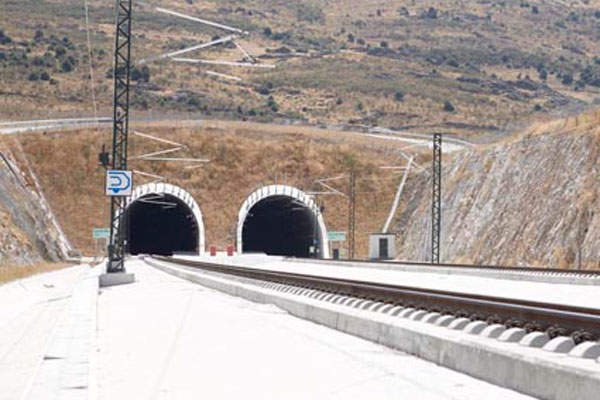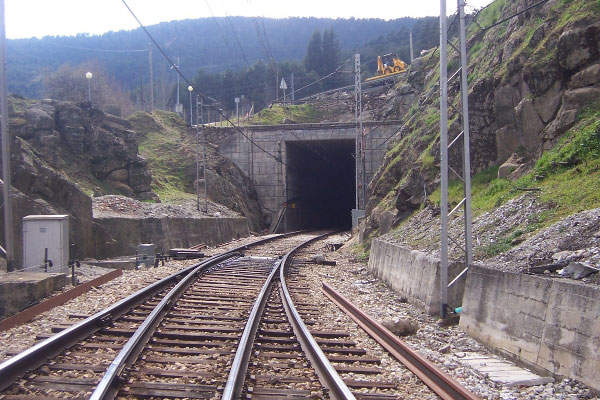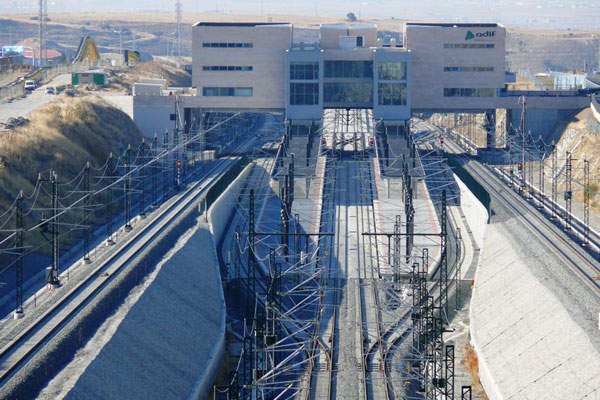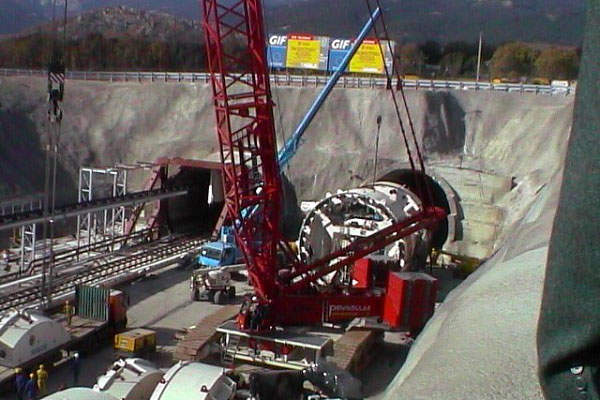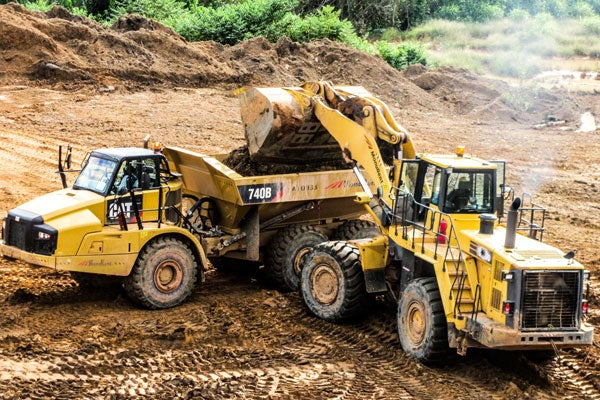
The 28.4km Guadarrama railway tunnel, built as part of the Madrid-Valladolid high-speed line, is the longest railway tunnel in Spain and the fifth longest railway tunnel in the world. The twin-tube tunnel passes through the Sierra de Guadarrama Mountain range, about 45km north of Madrid, and was opened for service in 2007.
The tunnel project was sponsored by state-owned Spanish railway operator Administrador De Infraestructuras Ferroviarias (Adif).
AVE high-speed trains travel through the tunnel at a maximum speed of 310km/h. The journey time between Madrid and Segovia is reduced to just 22 minutes with the use of Guadarrama tunnel. The travel time between Madrid and Valladolid is reduced to just 55 minutes.
Guadarrama railway tunnel details
The Guadarrama tunnel comprises of two parallel tube tunnels, each 28.4km in length and 8.5m in diameter. The tube bored twin tunnels are laid 30m apart from their central axes and have interconnection passages located at every 250m.
The tunnel runs from the Madrid side at an altitude of 998m and reaches a maximum altitude of 1,200m during its course, before finally descending to height of 1,114m at the Segovia exit.
Guadarrama tunnel construction
Construction of the tunnel commenced in September, 2002. Detailed geological mapping along with systematic Electrical Resistivity Tomography profile was conducted to evaluate the rock mass before the tunnel construction. The rock mass excavated for the tunnel contained crystalline rocks such as granite and gneiss.
Four double shielded tunnel boring machines (TBM), two Herrenknecht TBMs and two Wirth TBMs were used for digging the tunnel. One of each TBM was employed for excavating the tunnel from the north and south ends simultaneously.
Cutting heads of each of the 250m long TBMs were formed of 60 steel rollers. The excavation process proceeded at an average pace of 16m per day. Approximately 58km of tunnel was bored within three years and about four million cubic metres of rock was removed during the excavation. The Guadarrama tunnel is the only tunnel in the world to be excavated for such a length without any intermediate access shafts.
The tunnels were excavated with a diameter of 9.5m, which was further reduced to 8.5m with the placing of 32cm thick voissoir ring inside each tube tunnel. Each ring was made up of seven 160cm wide voissors. A total of 248,304 voissoirs were used for the tunnel construction.
The railway tracks comprised of UIC-60 rails laid on concrete slabs installed with fixed plates on ballast.
Safety system of the Guadarrama tunnel
The tunnel comprises of a control centre for monitoring the ventilation, emergency room air supply, signaling, communications, and fire extinguishing systems.
Emergency galleries are placed at every 250m while the 500m long emergency room is placed in the middle of the tunnel. The ventilation system of the emergency room is capable of providing 48 hours of fresh air in case of fire.
Contractors involved with the Guadarrama tunnel construction
Ferrovial-Agroman provided geo-technical assistance for the high-speed railway line passing through the Guadarrama tunnel.
FCC construction was awarded the contract for constructing the Northern section of the tunnel, whereas Acciona was awarded the construction contract for the southern segment.
Wirth was awarded the contract for two double shielded TBMs for digging the Guadarrama tunnel. Rowa was sub-contracted by WIRTH for providing backup installations for the tunnel boring machines.
Herrenknecht supplied two 9.5mm diameter TBMs (S-201 and S202) for the tunnel construction.
Eupen Cable was awarded a contract for supplying TETRA optimised Radiating RMC 114-T-HLFR cables.
Related project
Madrid-Levante High Speed Railway Line, Spain
Spain has the longest high speed railway network in Europe and the second highest in the world, after China. The country’s total network accounts to 2,665km, with five dedicated lines. These lines establish high speed links between the largest cities of Spain and the capital city of Madrid.

